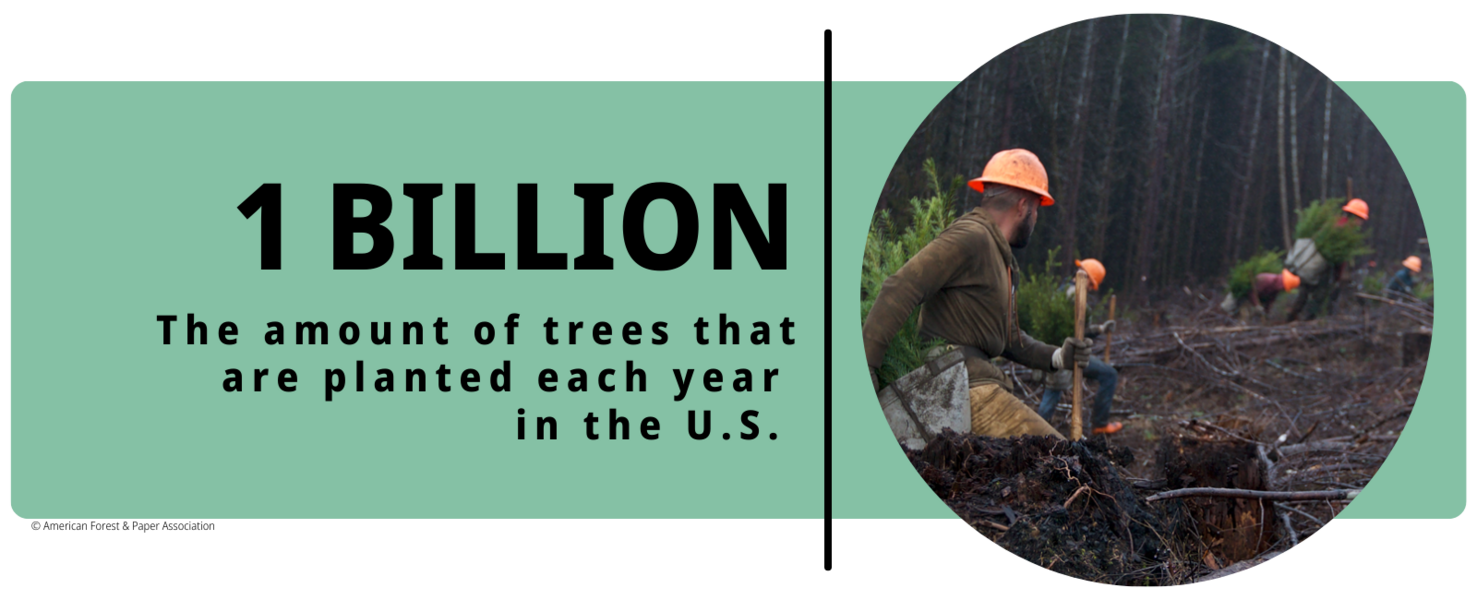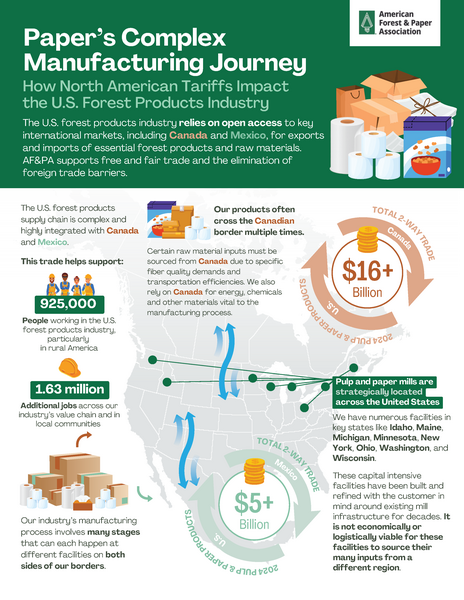How is Paper Made from Wood?
U.S. pulp, paper and packaging manufacturers rely on a complex supply chain to produce the everyday goods Americans rely on. That supply chain begins by sourcing forest materials to make fresh wood pulp.
The location of U.S. pulp and paper facilities is largely based on the proximity to the raw materials and other inputs needed to manufacture products. In fact, our industry relies on raw materials for inputs in the manufacturing process from key partners like Canada. The economic impact of these manufacturing activities and our supply chain is significant.
What Kind of Wood Materials Does the Paper Industry Use for Paper and Packaging?
Paper manufacturers use wood that is unsuitable for building materials to make fresh wood pulp.
This can include:
- Branches
- Tree tops
- Stumps
- Bark
- Wood leftovers from sawmills like sawmill dust and chips
- Trees from forest thinnings, a necessary process to keep forests healthy
- Pulpwood, which are small trees that can’t be turned into lumber
Our industry uses every part of the tree during the manufacturing process, so nothing goes to waste. What doesn’t end up in the final product can be used as an energy source for the paper mill.
Where Does the Paper Industry Source Wood Materials for Paper and Packaging?
Managed working forests. 90% of the wood materials our industry uses come from nearly 11 million small, private, family-owned managed forests. On managed forests, trees are replanted on continuous cycles.
Sawmills. We source materials like chips and sawdust. Our mills can transform these materials into every day, essential products.
Most U.S. pulp and paper mills source their materials from within an approximately 100-mile radius of the mill. This is known as the facility’s fiber basket. For mills in the northern United States, that fiber basket can include parts of Canada.

Does the Kind of Wood Matter When Making Paper Products?
Yes, the kind of wood matters when producing paper products.
Manufacturing different products is a lot like following a recipe. Depending on the product, manufacturers alter their recipe to deliver different qualities and characteristics such as:
- Strength
- Versatility
- Durability
- Softness
- Absorbency
- Cost
The type of tree, whether it is hardwood or softwood, and even the location of growth, each alter the final product. Similar to how different types of flour affect the outcome of a baked good.
Softwoods, like pine, have longer fibers and are used for products that need more strength. Whereas hardwoods, like oak or ash, have shorter, fatter fibers that add bulk. They also make something softer.
Much like baking, it’s not easy to swap an ingredient and still get the same characteristics in your baked good. The same goes for manufacturing paper products.
Changing the species of tree used in the pulp could change multiple characteristics of a product.
EXPLORE
The U.S. forest products supply chain is complex and highly integrated with Canada and Mexico.
Explore paper's complex manufacturing journey and discover how North American tariffs affect the industry.

